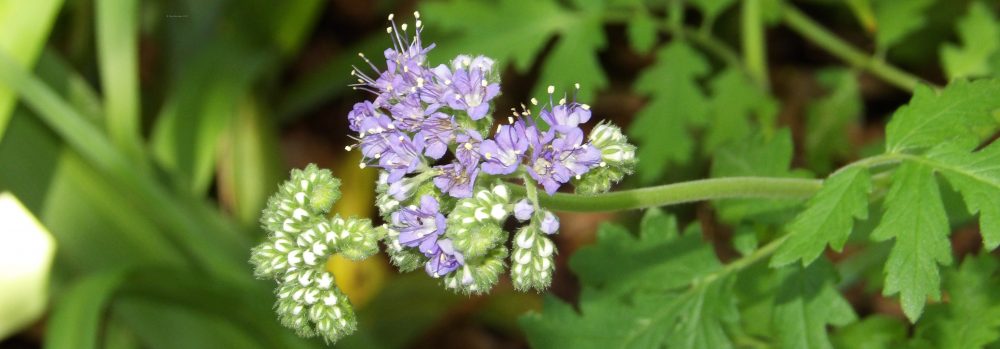In keeping with my native plants manifesto, which you can read here, I’m celebrating Texas Native Plant Week by profiling some of the native plants in my own gardens. The information reflects what I’ve learned from the transformation of my traditional maintenance heavy “yard” to a no-lawn, water-wise garden, featuring beautiful Texas native plants– which were the drivers and are the stars of that metamorphosis.
Turk’s Cap, Malvaviscus arboreus, is another perennial in my gardens that I consider a “staple” plant.
Turk’s Cap was one of the first Texas natives that I loved and planted and I have it growing throughout my property–it serves an anchor perennial for most of my gardens.
The petite, scarlet and swirled hibiscus-like flowers, blooming May through October,
…herald the beginning of our long growing season here in Texas. Turk’s Cap is native to Texas and other parts of the Southeast, all the way to Mexico.
An excellent wildlife plant, it feeds bees (native and honey),
…hummingbirds, butterflies of all sorts, and birds favor the fruits in summer, fall and early winter.
The leaves are wide and tropical looking, giving plenty of room for bird poop to land on,
…and the flowers are showy and prolific.
Gosh, I love the look of this plant. But it’s huge. It can get so, so large, you’ll want to make room for it–so don’t squeeze it in. All of my established stands of Turk’s Cap are 8-10 feet across. Big ole thangs.
If you plant Turk’s Cap, you’d better like where you put it because after a few years, once it’s established, it’s hellacious (and back-breaking) to transplant. The bulbous and massive root (system) is the reason why Turk’s Cap is so hardy and drought tolerant. I don’t water several of my established groups of Turk’s Cap.
Turk’s Cap is best in shade, dappled shade, and part-shade. Yay! A beautiful perennial that is great in shade! It’s adaptable though and works in full sun–in fact, it blooms beautifully. However, the leaves flatten and darken in a way that I find unattractive, so I generally don’t plant mine in full sun–there are much better choices for planting in the blasting Texas sun. However, as a shade perennial? I just love it!
Turk’s Cap is a herbaceous perennial, meaning that it dies to the ground with a hard freeze. It will disappear in a cold winter after you’ve pruned it to the ground, so it’s a good idea to pair Turk’s Cap with evergreen growing companions. Some examples might be Columbine, Iris, holly shrubs (for example, the native Yaupon), Rock Rose, or even some of the more shade tolerant yucca plants, like this Paleleaf Yucca.
(Disclaimer: this particular part of my garden receives late morning to early afternoon summer sun, but is shaded for the remainder of the day.)
Don’t be dissuaded by Turk’s Cap going AWOL in winter. It will return quickly in early spring; tough, hardy and beautiful, Turk’s Cap will bloom and bloom during the long Texas growing season.
















I have seen how the anount of sunlight affects the leaves. I totally agree that this plant looks so much better in shaded areas. I recently saw some growing next to a white 4 o’clock shrub. It was a combo that really worked.
LikeLike
I love TC in shade–it’s just so much prettier there than in full sun. I’ll bet the combination of TC with four o’clocks was really nice. I’ll have to try that.
LikeLike
Lovely plant, I have never seen it here.
LikeLike
I would imagine it’s a bit too on-the-tropical side your your area. Maybe in a container?
LikeLike
Once again a series of great shots but that stunner at the end of the post! What a great way to wrap up glad tidings of Turk’s Cap, gardener’s choice for part shade, low water use and wildlife support. That plant is a hat trick in and unto itself!
LikeLike
It’s a great plant all around. TC is beautiful planted with Goldeneye, which its yellow companion in that last shot. More about Goldeneye tomorrow….
LikeLike
My Turk’s Cap start out in shade and look great but the sun gets to them in August and then they don’t look so good. I was going to try to move them to shadier spots. Those roots though, yikes! Thanks for the warning so I’ll be prepared now.
LikeLike
Ha! Get someone big ‘n burly to help you out on that transplant! The good news with transplanting (at least in my experience), TC are so tough–you don’t have to keep the root ball as intact as with other plants, so the survival rate is pretty good. Just make sure you have a nice warm bath and heating pad waiting.
LikeLike
Pingback: Texas Native Plant Week | My Gardener Says…